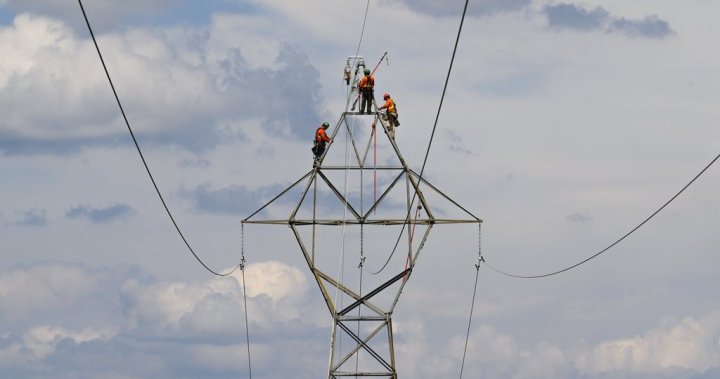Canada
Clean energy transition must be key for next Ontario government: report

Ontario’s Path to a Clean Energy Economy: Opportunities and Challenges
1. The Need for a Clean Energy Transition
The next Ontario government faces a critical opportunity to lead the province into a clean energy economy, according to a recent report by the Pembina Institute, a prominent clean energy think tank. The report emphasizes the importance of expanding interprovincial electricity transmission to reduce trade uncertainties with the United States and to position Ontario as a leader in the transition to a low-carbon future. Ontario, like the rest of Canada, is navigating a “new economic reality” marked by trade disputes and global economic shifts. While the province has made progress in reducing emissions, particularly through the phaseout of coal, recent trends suggest a concerning reversal. The report argues that developing a clean energy economy is not just an environmental imperative but also a pathway to affordability, healthier communities, and economic resilience.
2. Progress and Challenges in Ontario’s Energy Landscape
Ontario has taken significant steps toward a cleaner energy future. In recent years, the province has made history with the largest battery storage procurement in Canada and approved an $11 billion investment to help consumers manage electricity use and costs. However, despite these efforts, Ontario’s electricity grid has seen a troubling decline in emissions-free generation, dropping from 94% in 2020 to 87% in 2024. This trend is expected to worsen as the province relies more on gas generation during the refurbishment of its nuclear plants. The report warns that this shift not only undermines Ontario’s clean energy progress but also exposes the province to price volatility and energy security risks tied to fossil fuel dependence.
3. Electric Vehicles: A Missed Opportunity for Ontario
While Ontario has successfully attracted new electric vehicle (EV) manufacturers, its domestic EV market lags behind other provinces due to gaps in consumer-focused policies. The province currently has fewer EV chargers per capita than the Canadian average and does not offer purchase rebates, unlike some other regions. This lack of support leaves many Ontarians hesitate to switch to electric vehicles, despite the long-term cost savings EVs offer. The report highlights that EVs can save drivers thousands of dollars over a decade when considering the total cost of ownership, even though upfront costs may be higher. To address this, the report recommends income-tested purchase incentives and the development of a provincewide charging network.
4. Buildings and Emissions: The Road to Efficiency
Buildings are another major source of emissions in Ontario, with nearly a quarter of the province’s greenhouse gas emissions coming from space and water heating powered by fossil fuels. The report calls for continued investment in energy-efficient home retrofits to make these upgrades more accessible to residents. Additionally, it suggests revising the Ontario Building Code to require new residential buildings to include EV-ready parking spaces, a move that would support the transition to electric vehicles. The report also recommends incentivizing and regulating the disconnection of gas infrastructure from new buildings, a step that would reduce reliance on fossil fuels.
5. Barriers to Progress and the Role of Government
Despite the promising opportunities outlined in the report, Ontario faces significant barriers to achieving its clean energy goals. The province’s current approach to natural gas infrastructure is a case in point. Recently, the government overruled a decision by the Ontario Energy Board that would have required building developers, rather than ratepayers, to pay for new gas connections. This move not only increases the financial burden on consumers but also discourages the adoption of cleaner energy alternatives. The report emphasizes the need for clear mandates from the provincial regulator and energy operator to support rapid electrification of the economy.
6. A Call to Action for the Next Ontario Government
The Pembina Institute’s report presents a compelling case for why the next Ontario government must prioritize clean energy and reduce emissions. By expanding interprovincial electricity transmission, supporting electric vehicles, and improving building efficiency, Ontario can build a more resilient and sustainable economy. The report also highlights the importance of addressing upfront costs for consumers, whether through incentives for EVs or financial support for home retrofits. In doing so, Ontario can create new industries, generate jobs, and ensure that the benefits of the clean energy transition are shared by all. The path forward requires bold leadership and a commitment to long-term thinking, but the rewards for Ontarians could be significant: healthier communities, more affordable living, and a stronger economy for generations to come.